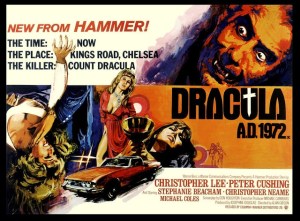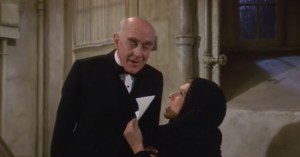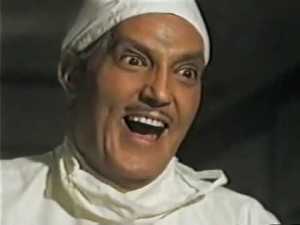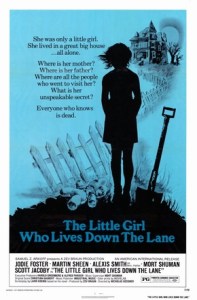Last year, we celebrated the 50th anniversary of the Monkees as a band by counting down our top 50 Monkees songs. Now, we’re celebrating The Monkees TV show by profiling each and every episode — exactly 50 years after it first premiered.
Tonight’s episode: “Monkees Marooned” (Season 2, Episode 8)
Air date: October 30, 1967
I’m gonna flat-out state it first and foremost, Monkee-heads (that’s what we’re called, right?): “Monkees Marooned,” is one charming Monkees episode. Directed by Monkees hero, Jim Frawley, “Monkees Marooned” showcases the boys at their comedic and musical best.
This episode was written zippily by sixties TV stalwart Stanley Ralph Ross, known primarily for his work on the always hysterical sixties Batman series and feels ripped from the pages of MAD magazine. He uses a relatively boilerplate exotic-island-treasure-hunt plotline to poke fun at Robinson Caruso, Tarzan, and the racial stereotyping that still takes place in pop culture today.

In fact, the whole episode feels a little like a lost Danger Island-style Banana Splits segment, except way-not racist. This is the second example that I’ve observed this season of the Monkees throwing racial expectations on their heads, the first one being in my analysis of “Everywhere A Sheik Sheik.”
In this particular episode, there is a ridiculous subplot involving stuffy britt Major Pshaw (character actor Monte Landis in one of his many appearances this season) searching for the same treasure as our boys. His “man Thursday” (hardy har) is played by the wonderful Rupert Crosse, not as a wise savage, but instead a goofy trickster fully aware that he’s in a surrealist sitcom. A running gag of this episode has Thursday facing camera and delivering a deadpan, “Who writes that stuff?”
Thursday is fully aware of the metatextual implications of his behavior, and he helps the Monkees win the day at the end of the episode. These are quite the progressive character moves for a stereotype who, in the wrong hands of other creative teams of the era, would have ended up an embarrassment by today’s standards.

Also, a hilarious and subversive sight-and-conceptual gag is the character of Kimba, played by Burt Mustin, a septuagenarian Tarzan knock-off who’s maybe gone a little meshugeh by being trapped on the island for too long. But alas, ol’ Kimba finds a happy ending when the treasure that the Monkees and Major Pshaw have been searching for ends up being the Jane (hiding in a treasure chest) to Mustin’s Kimba all along. Their love, featured in a delightful romp to “Daydream Believer” is reminiscent of the love scenes between Aunt Jessie and Buster Bloodvessel in the Beatles’ Magical Mystery Tour film, which would air on Boxing Day just a few months after this episode, and I mean that in a good way! Seriously!
Those are the highlights, folks, but there’s a lot more in here to recommend it. For starters, the episode starts with a killer dirty-picture joke that I don’t want to spoil for those who have never seen it. The joke leads to poor ol’ hapless Pete getting scammed by swapping his guitar for a treasure map, and before you can say “Robert Louis Stevenson,” the boys are off to a jungle island to go treasure hunting.

But before they leave, Davy Jones has a hysterical turn as a ship commodore on the Monkees’ rowboat, which sinks due to having too many unnecessary items on it. I like Jones’ performance in this episode. Freed from the shackles of being a lovelorn sap, Davy gets a lot of moments to be lighter and funnier, something that I wished happened more often in the rest of the series.
Also notable is director Jim Frawley’s cameo as Dr. Schwartzkopf, a typical German doctor, who just happens to be in the jungle and offering to treat the Monkees for malaria. It’s rare that Frawley gets to perform along with the Monkees in the TV series, and he was very significant in gifting the Monkees their comedic sensibilities. Although they play the scene lightly, it’s cool for a comedy geek like myself to see the boys performing along with their improvisational comedic guru. It looks like they were all having a blast as well.
Musically, this episode hits all the right notes as well (sorry about that one, folks). We’ve got our aforementioned love romp to “Daydream Believer” which features shots of the Monkees swinging on vines and falling into ponds, some of which were famously featured in season two’s opening credits.
We’ve also got a warm and vibrant performance of “What Am I Doing Hangin’ Round” from the recently released Pisces, Aquarius, Capricorn & Jones LTD, my personal favorite Monkees record (at least as of this writing; that opinion changes almost daily). Mike Nesmith’s vocals on this one are iconic, and for those of you who like the Monkees a little more country-tinged and rustic, this is a performance for you.

Overall, if you showed someone who had never heard of the Monkees before “Monkees Marooned” as an intro, you could certainly do a lot worse. Their subversive senses of humor are on display, as are their deft musical acumen. It’s a shame that there aren’t more episodes of the series that allow for the Monkees to be as vibrantly playful as they are here. But at least, 50 years on, “Monkees Marooned” remains a treasure to be unearthed by fans.
The post Every ‘Monkees’ Episode: “Monkees Marooned” (S2E8) appeared first on REBEAT Magazine.
















 Things get creepier when Henry’s Aunt Mildred (
Things get creepier when Henry’s Aunt Mildred (














 Picture the scene: It’s late 1955, and Elvis Presley is onstage wowing the small crowd in Amory, Mississippi. He’s been on tour with Johnny Cash, but this night is special because another Sun Records artist, Carl Perkins, is also on the bill.
Picture the scene: It’s late 1955, and Elvis Presley is onstage wowing the small crowd in Amory, Mississippi. He’s been on tour with Johnny Cash, but this night is special because another Sun Records artist, Carl Perkins, is also on the bill.


































 Speaking of writing, the screenplay by was adapted by
Speaking of writing, the screenplay by was adapted by  In terms of handling the material placed before them, most of the rest of the cast does quite well with the passages they have to unpack, but Sheen’s Frank is of special note. He brings the right level of menacing and pathetic to give us the full worth of his Frank, such as it is; the way he plays off of Foster’s Rynn propels the film into a final showdown with considerable tension as the two square off with dialogue that moves like a well-choreographed duel.
In terms of handling the material placed before them, most of the rest of the cast does quite well with the passages they have to unpack, but Sheen’s Frank is of special note. He brings the right level of menacing and pathetic to give us the full worth of his Frank, such as it is; the way he plays off of Foster’s Rynn propels the film into a final showdown with considerable tension as the two square off with dialogue that moves like a well-choreographed duel.







 conveyed are as dated as the humor; references to the
conveyed are as dated as the humor; references to the 
